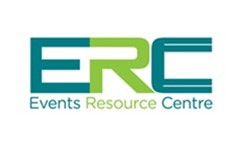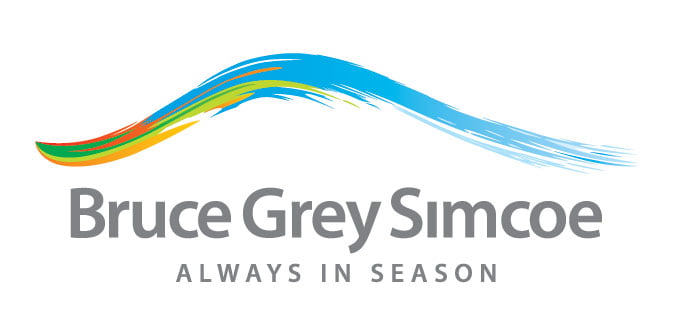
Nonprofits rely on effective fundraising to fulfill their missions, so it is vital to build lasting relationships with donors. Position your group for success with these ideas and strategies.
Planning for Success
- Decide on a clear and concise message. Don't lose sight of the purpose behind your fundraising efforts. Successful campaigns stay focused on the organization's mission and communicate this goal to prospective donors.
- Create timelines for specific goals. Indiegogo.com reports that 42% of funds were raised in the first and last three days in a study analyzing 100,000 fundraising campaigns. It's important to set goals for all stages of the campaign and consider the common need for a mid-campaign boost.
- Select the right name. Creating a memorable name for your fundraiser helps donors know your cause and purpose, and it can make a huge difference in a donor's initial attraction. Be creative and intentional.
- Make sure all key players are on board from the start. This list may include your board of directors, but also remember to ask volunteers and valuable donors for their input.
- Recruit help. Think beyond your staff and board of directors for help in getting the word out about your campaign. Look into connecting with service clubs from local colleges, high schools, churches or youth groups for more support.
- Engage your volunteer base. Volunteers are almost twice as likely to donate to charities than non-volunteers (40.4% non-volunteers vs. 79.2% volunteers) according to the Corporation for National and Community Service. Genius Tip: Check out these tips to boost your volunteer support and retention.
- Ask a seasoned fundraiser for advice. Invite a respected nonprofit leader to have coffee and ask for their insight on lessons learned from past fundraising efforts.
- Look at other successful campaigns for inspiration. Be on the lookout for fundraisers that go viral on social media, and research online to find case studies. Write down what worked and why. Then consider if you could replicate the same results with your own unique idea. Genius tip: Use these 100 fundraising ideas for inspiration.
- Take advantage of a variety of communication channels. Develop a strategic plan to build awareness and raise funds, and focus on building a strong social media presence for your campaign. Recruit some passionate supporters to be ambassadors and outline a clear plan as to what they can do to help.
- Never underestimate the value of email. Email is responsible for about one-third of nonprofits' online fundraising revenue according to salsalabs.com. Add direct links to fundraising pages to make it easy for donors to give.
- Create plans to measure success throughout the campaign. Report positive results as often as possible.
Building Donor Relationships
- Address the right audience. 88% of dollars raised typically come from only 12% of the donors according to a 2015 study from Bloomerang.com. This is why building relationships and asking for feedback from top donors is paramount.
- Recognize the value of transparency. Beyond legal requirements, being completely transparent with your financial information inspires confidence in your organization.
- Understand your donors' habits. More than half of all people who visit a nonprofit's website do so from a mobile device according to Mobilecause.com. Their suggestion: set up the donate button as the main call to action on your homepage.
- Build trust with online donors. Be sure your donation form contains security validation links to let people know transactions are protected.
- Understand the value of listening to your donors' concerns. This is important for your current and future fundraising campaigns. It's tough to get negative feedback, but if you do, listen to it closely.
- Keep donor communications positive. Research consistently shows that current and prospective donors are much more likely to act on positive emotions (such as the good results of their contributions) rather than negative consequences (as in without your donations more children will be hungry tonight).
- Promote monthly giving. Research from Nptechforgood.com estimates that monthly donors give 42% more in one year than one-time donors. Offer the opportunity to set up recurring gifts, and provide easy options for donors to give again.
- Offer networking opportunities. Hosting regular breakfasts or after work events will give high profile donors the opportunity to connect with others who support your cause. Go a step further and have current donors invite others who may be interested in supporting.
- Know your donor profile. Even if you think your organization has widespread appeal, identify the characteristics and demographics that make some individuals more likely to contribute than others.
- Follow through. Make it easy for someone who expresses interest in your cause to have an immediate connection. Connect and follow through as promptly as possible.
- Show how their donation made a difference. Be as specific as possible.
- Understand the value of donor retention. Develop a strategy to cultivate long-term relationships with donors. Remember it usually costs less to retain a donor than to find a new one.
- Express thanks. Showing gratitude to loyal donors on a regular basis also serves to demonstrate the need for their continued support.
Communicating Your Message
- Always include a call to action. Donors must easily understand your intended next step whether you are communicating through email, social media or face to face.
- Provide compelling visual content. Feature high quality photos and graphics to engage donors in your organization's story. Sharing photos of volunteers in action can help encourage active and new donors.
- Videos can be powerful tools. In our digital world, sharing your organization's story through video can be well worth the effort and cost.
- Stay consistent with campaign messaging across all channels. Although using a variety of methods such as direct mail, email and social media expands your reach, ensure your message is being portrayed accurately throughout all of them.
- Ask your donors to help spread the word too. The power of word of mouth and social media sharing cannot be overestimated.
- Share your personal connection to your organization's cause. Find other people in your organization who also share a connection and invite them to share it too.
- Avoid using industry acronyms or insider jargon in campaign communications. Although such terms may be second nature to some supporters, they may also alienate new donors.
- Use email signatures as reminders. During your campaign, add an email signature describing your fundraising efforts on all correspondence, not just on emails related to the campaign.
- Be responsive. According to mobilecause.com, responsive online donation pages (those that resize on different devices such as mobile phones) yield 34% more gifts than non-responsive pages by making it easier for people to donate from any screen size. Responsive design could really boost the bottom line.
- Be specific. Provide suggestions as to donation amounts needed for different objectives (e.g. $100 will provide supplies for 12 weeks). When a donor can quantify where the money will go, they are apt to give more.
Expressing Appreciation
- Use gifts as reminders. If donors received a cool bag featuring your organization's logo as a thank you, this gift serves as another great way to spread your message and also remind the donor of your needs in the future.
- Handwritten notes may be more special in today's digital world than ever before. Personalized and prompt thank you notes written on nice stationery take gratitude to a higher level.
- Personalize donor communications. Along with the necessary fundraising campaign talking points, be sure to recall personal details from prior conversations such as asking about a family member or important event.
- Show website appreciation. Developing a stewardship section on your website can be a great way to thank both new and repeat donors.
- Host an appreciation party. Not only can this be a great way to thank loyal supporters, but inviting prospective donors to your event can open new doors for funding. Genius tip: Use an online sign up to plan your event
- Don't forget to show appreciation to your fundraising team too. Find creative ways to motivate team members and recognize their successes. Check out these gift ideas to reward your hard-working volunteers.
With these helpful tips, your fundraising strategy will be off to a great start. Good luck!


